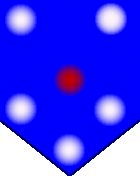
Lomba
This was a refight of the first major battle during Operation 'Modular' in Angola, which took place on 9/10 September 1987, when the South African Combat Group 'Bravo' (comprising the core of 32 'Buffalo' Bn, with two companies of 101 Bn) attacked a bridgehead that had been formed by FAPLA's 21 Mechanised Brigade, across the River Lomba.
********************************************************************************
As in history, despite a distinct materiel advantage over the light UNITA and South African forces, the FAPLA offensive was first stalled then destroyed by their highly-mobile, well-trained and veteran enemy, who were supported by excellent artillery.
http://www.fireandfury.com/conventions/lomba.php


























